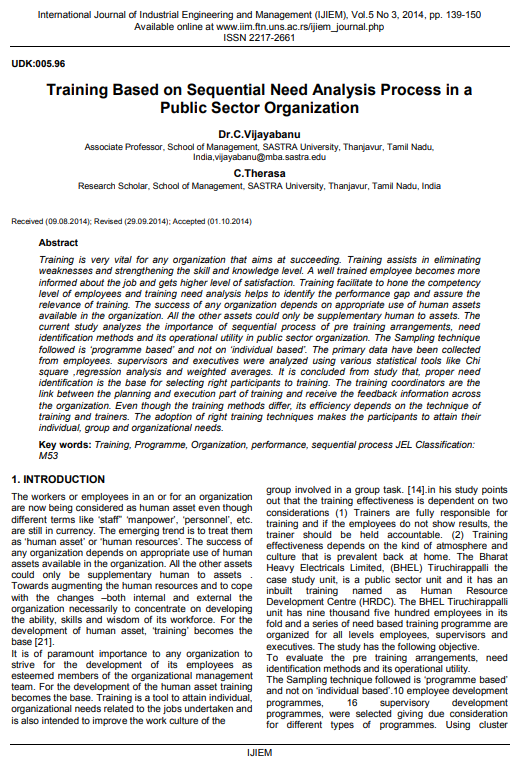Training Based on Sequential Need Analysis Process in a Public Sector Organization

Published 2014-09-30
abstract views: 43 // FULL TEXT ARTICLE (PDF): 0
Keywords
- Training,
- Programme,
- Organization,
- performance,
- sequential process
- JEL Classification: M53 ...More
How to Cite
Copyright (c) 2023 International Journal of Industrial Engineering and Management

This work is licensed under a Creative Commons Attribution 4.0 International License.
Abstract
Training is very vital for any organization that aims at succeeding. Training assists in eliminatingweaknesses and strengthening the skill and knowledge level. A well trained employee becomes more informed about the job and gets higher level of satisfaction. Training facilitate to hone the competency level of employees and training need analysis helps to identify the performance gap and assure the relevance of training. The success of any organization depends on appropriate use of human assets available in the organization. All the other assets could only be supplementary human to assets. Thecurrent study analyzes the importance of sequential process of pre training arrangements, need identification methods and its operational utility in public sector organization. The Sampling technique followed is ‘programme based’ and not on ‘individual based’. The primary data have been collected from employees. supervisors and executives were analyzed using various statistical tools like Chi square ,regression analysis and weighted averages. It is concluded from study that, proper need identification is the base for selecting right participants to training. The training coordinators are the link between the planning and execution part of training and receive the feedback information acrossthe organization. Even though the training methods differ, its efficiency depends on the technique of training and trainers. The adoption of right training techniques makes the participants to attain their individual, group and organizational needs.
Article history: Received (09.08.2014); Revised (29.09.2014); Accepted (01.10.2014)

